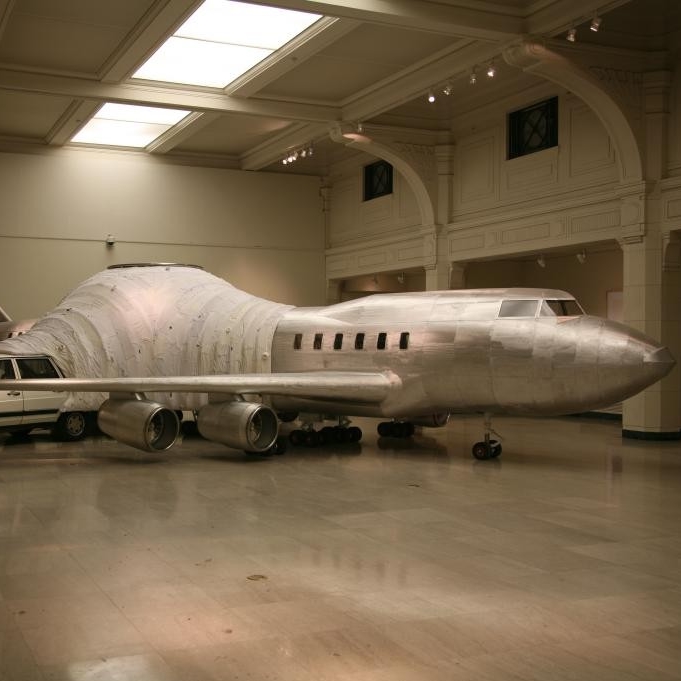 Yue Minjun, Lilium (2021). Oil on canvas. 200 x 250cm. Courtesy Tang Contemporary Art, Hong Kong.
Yue Minjun, Lilium (2021). Oil on canvas. 200 x 250cm. Courtesy Tang Contemporary Art, Hong Kong.
Tang Contemporary Art announces Smile at the Flower Sermon, a solo exhibition featuring works by the contemporary Chinese artist, Yue Minjun, will be unveiled at the Hong Kong gallery space on 24 March 2022. The exhibition presents Yue Minjun's iconic Laughter series and featured the new Flower series since the pandemic. This exhibition represents a remarkable return of Yue Minjun after a 10-year hiatus and is also his first collaboration with Tang Contemporary Art.
Yue Minjun is one of the most renowned contemporary Chinese artists. He came into prominence in Chinese contemporary art with a series of paintings, which features an exaggerated and iconic smiley face presenting a 'self-image.' This series made him a legend of his generation and earned him international acclaim. Hopes rose and fell after the winds of freedom began to blow in a specific historical time in China, and Yue Minjun's works have reflected the experiences of people living amidst the unprecedented changes in Chinese society since the 1990s. Small glimpses into grand historical events appear vividly on the canvases as cheeky grins or allegorical laughter. Yue's ability to handle difficulties with grace is readily apparent. The intense visual impact of his smiling figures distinctly conveys Yue's questioning attitude. Change is the only constant, and this series began with paintings of symbols from Chinese socialist propaganda paintings and pieces that satirically appropriated classic works of art, then shifted toward the unchecked aesthetic imagery before transitioning to the dreamy scenes shown in this exhibition. Behind the smiles and laughter, all of these paintings reflect Yue's close observations of his own experiences.

Yue Minjun, Light Blue (2021). Oil on canvas. 60 x 50cm. Courtesy Tang Contemporary Art, Hong Kong.
Yue Minjun has said, 'Instead of Western Surrealism, these daydreams come from the Eastern concept of sitting in meditation. The illusory world perceived in the process of meditation develops without explanation.' These kinds of daydreams are presented in Stranded, Stay Away, Light Blue, and other new paintings from this Laughter series. Artists added the capture of the mysterious halation, the perceptual imagination wandering in the pictures, in which, an introverted self-examination seems like a valid way to escape reality. The advent of the pandemic changed the pace of life around the world and influenced the ways people think. Distortion, isolation, division, and cultural conflict fractured the existing systems of meaning. Escape seems to be an instinctive human reaction; the distressing emotion in predicaments and the wordless struggles in the paintings point to Yue's worries about the future of humanity.
In 2020, Yue Minjun lived for several months in Chuncheng in the southwestern province of Yunnan. Perhaps the flowers that abound in this city burst through the seams of the pandemic gloom, in which he found the inspiration to create. As a result, he made a significant breakthrough and created his Flowers series. Flowers are symbols of beauty that could be likened to a plant's smiling face. Here, exquisite flowers replace the smiling faces of the past and seductively bloom in front of figures' faces, but this beauty is merely decorative in Yue's mind. Due to the dissatisfaction with the ubiquity of superficial opinions and an awareness of hidden truths, viewers cannot resist the urge to catch a glimpse of the mysterious expressions and emotions of the people behind the flowers. If his smiling self-portraits were active choices, then his Flowers paintings are passive obstructions. The context and pictorial significance of the figures whose facial features are concealed by flowers are supplemented by their clothing, forms, and gestures. As a result, the status, gender, and personality of the figures in the painting give way to the needs of society as a whole. What are the flowers concealing? What have we lost? We cannot find clear answers in the signifier of the flowers.

Yue Minjun, Hibiscus Moscheutos (2021). Oil on canvas. 200 x 250cm. Courtesy Tang Contemporary Art, Hong Kong.
In Hibiscus Moscheutos, the three women wearing swimsuits and carrying fashionable short haircuts are representing classic images of women between the 1980s and 1990s in Chinese almanack. Lilium depicts a transaction scene of three characters from the fragment of a classical painting. The paintings in his Flowers series all come onto the stage with a breath of fresh air. Yue's bold use of colours and his intuition for the textures of past and present sensations and subjects reflect his ability to flourish between popular culture and modern trends. After many years of introspection, Yue Minjun's aesthetic ideals and deep concern for our present days have been internalised in Flowers. Therefore, the series has become a spiritual code of our times because of his keen sensitivity and his bravery to break through from the traps of youth and self-transformation.
In Five Lamps Merged in the Source (Wudeng Huiyuan), the monk Pu Ji recorded the story of the Smile at the Flower Sermon, in which Sakyamuni held up a flower and Mahakasyapa smiled. Countless people have sought to find meaning in this scene: Why did Mahakasyapa smile? How did Mahakasyapa attain enlightenment? In this place of sweeping enlightenment, Yue Minjun has also come to realize that the rich symbolism and metaphor inherent in painted smiles and flowers will always be relevant. Perhaps, in the turmoil of the world today, it can show us the way to deliver the universe through all difficulties.
About the exhibition
Dates: 24 March–30 April, 2022
Venue: Tang Contemporary Art, Hong Kong
Address: 10/F HQueens, 80 Queen's Road, Central Hong Kong
Courtesy Tang Contemporary Art.




























